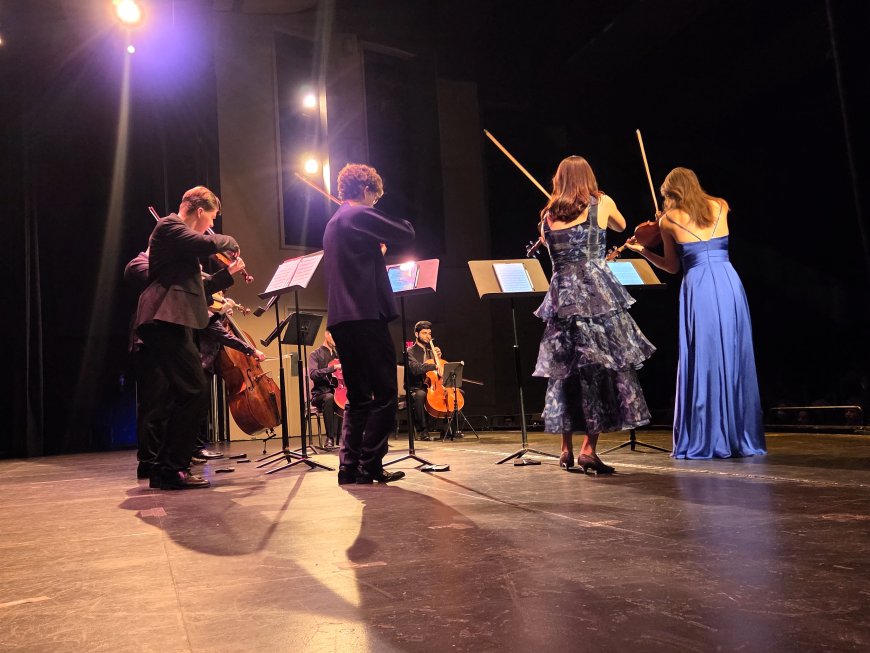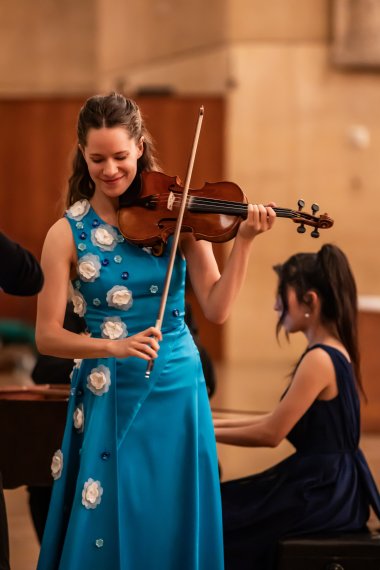
“Continuum: The Architects of Elegance,” the concert that the ensemble Kontrapunktus performed at the Armstrong Theater in Torrance, marked an artistic stretch away from its regular focus on Baroque repertory to a program of short, Classical works and one 20th-century piece.
In fact, a lot more than the group’s repertory has changed since August 2024, when I last heard them. The roster of players is almost entirely different and Wenlan Jackson has now replaced Cameron Alan-Lee as concertmaster.
The all-string ensemble now includes: Artistic Director Osheen Manukyan (cello), Duncan McDougall (violin), Eunice Lee (violin), Dawid Kasprzak (violin), Tomsen Su (cello), Yuri Santos (viola), Nico Valencia (viola), and Nicholas Arredondo (bass). This new incarnation of Kontrapuntkus is still in its development phase and less confident than before about its musical identity and onstage personality.
Sunday's concert of brief works and excerpts by Luigi Boccherini, Joseph Haydn, Mozart, and Gioachino Rossini were full-bodied, energetic, and sonorous when the ensemble performed as a single unit. But the theater’s dry acoustic diminished the effect of the more delicate moments in the music.

The concert's high point was a performance of the Concertino for Violin and Strings, Op. 42, by the Polish/Soviet composer Mieczyslaw Weinberg — his music has enjoyed a renaissance over the past decade.
Weinberg (1919-1996), a Jewish artist who escaped Nazi Germany’s invasion of Poland by escaping to Russia, accommodated his style to Soviet arts policy. Despite a scary arrest in 1953, cut short by Stalin’s death two months later, Weinberg composed prolifically and was heavily influenced by his friend, Dmitri Shostakovich. The Concertino is anything but an avant-garde work — its melodies are infused with a sense of nostalgia.
As in previous seasons, violinist Aubree Oliverson was the soloist. Oliverson said she feels "a deep emotional connection” to Weinberg’s work.
In a 2024 review of Kontrapunktus, I wrote of Oliverson’s instrument, a 1743 Guadagnini violin on loan to her. “It is one of those rare violins that instantly demand your attention with its combination of honey rich tone and volume,” she said.

When Oliverson bowed the first notes of the Concertino, those memories came rushing back. Her performance combined exquisite virtuosity with deep emotional expression. The opening allegretto movement begins not with an orchestral introduction, but with bravado from the solo violin. The ensemble enters with lilting colors accompanied by increasingly virtuosic statements from the solo violin. The movement builds to a climax that then gradually fades away like a partially remembered dream.
Uncharacteristically, the second movement begins with a stark violin cadenza, aptly described in the program note as, "an intense emotional outcry." Again, the mood is tempered by the entrance of the ensemble and the music transitions into a gentle adagio. The equally contrasting final movement, Allegro moderato, creates a dance partnership between the soloist and the ensemble that builds to a swirling conclusion overlaying a shadowy undercurrent of dread — a state of mind reminiscent of the frenzied climax of Maurice Ravel's La Valse.
Soloist and ensemble worked well together, and the players performed like pros. But Kontrapuntkus is a work in progress, while Oliverson is definitely ready for prime time.




